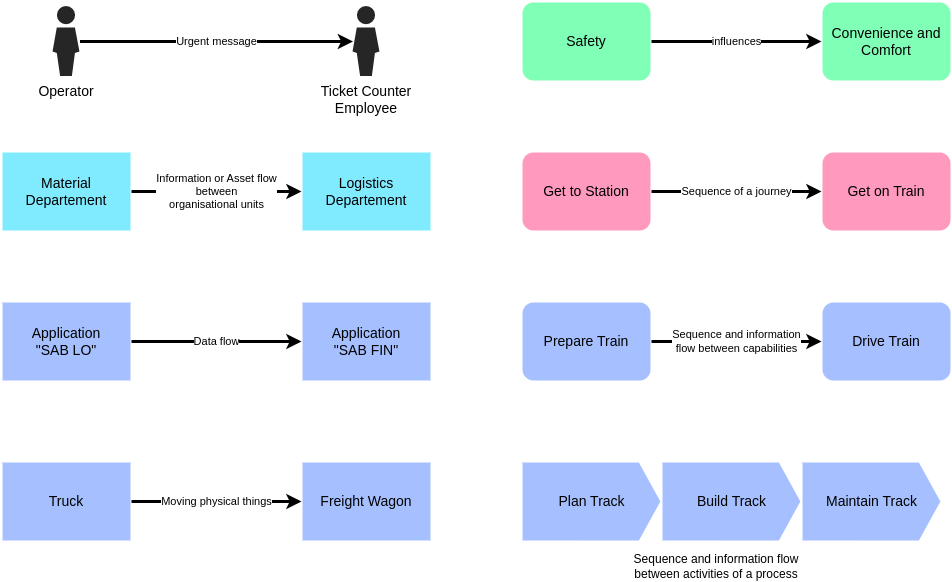m (Protected "Flow" ([Edit=Allow only administrators] (indefinite) [Move=Allow only administrators] (indefinite))) |
No edit summary |
||
| Line 23: | Line 23: | ||
*Understand the sequence of people's tasks in the form of [[journeys]]. | *Understand the sequence of people's tasks in the form of [[journeys]]. | ||
*Identify flows between [[organisational units]] in [[organisation|organisational design]]. | *Identify flows between [[organisational units]] in [[organisation|organisational design]]. | ||
{{#seo: | |||
|keywords=EDGY,EDGY Relationships, Flow, Process | |||
|description=In EDGY, flow relationship describes an element that influences another by passing objects. EDGY is Intersection Group's Open Source tool for collaborative Enterprise Design. | |||
|image=EDGY-Flow-Relationship.png | |||
|image_alt=EDGY Flow Relationship | |||
}} | |||
Latest revision as of 19:16, 8 June 2023
Enterprise Elements | Relationships
Flow
An element influences another by passing objects.
An enterprise functions through the way its parts influence each other to produce an aggregated result no single part can produce alone. Understanding and improving the effectiveness and ease with which things flow through the enterprise and its elements helps it function efficiently and effectively.
Notation
Examples
- An organisational unit or team relies on information from another team to do a task.
- A business pays another by transferring money.
- A business process involves data passed from one information system or software to another.
- A supply chain involves transferring raw materials and physical goods between locations.
- Team collaboration relies on the flow of energy and attention.
- A public enterprise's purpose is influenced by a prerequisite goal: obtaining the necessary budget.
Use
- Design ways to enable communication between people.
- Design a sequence of activities to optimise processes.
- Understand the sequence of people's tasks in the form of journeys.
- Identify flows between organisational units in organisational design.
